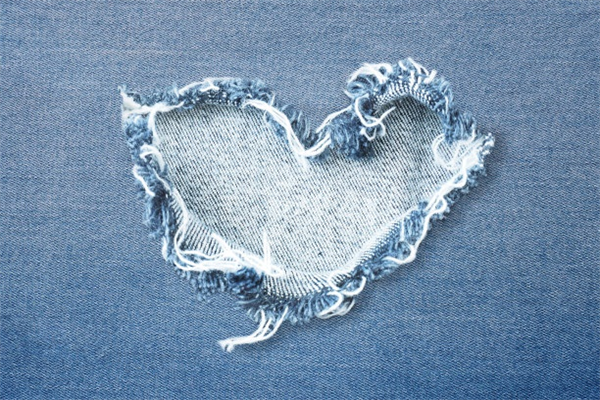Advanced Denim Sanding And Destroying Techniques For Designer Jeans
Discover cuttingedge denim sanding and destroying techniques for crafting highend designer jeans. This indepth guide explores advanced methods like hand sanding, laser distressing, enzyme washing, and precision whiskering to achieve unique, vintageinspired finishes. Learn how top denim brands create authentic wear patterns, frayed edges, and artful abrasions while maintaining fabric integrity. We cover essential tools, stepbystep processes, and industry secrets for replicating natural fading and customized destruction. Whether you're a jeans designer, denim artisan, or fashion entrepreneur, master these professional distressing tactics to elevate your collections. Understand the balance between durability and aesthetics, from subtle abrasions to bold ripped effects, and explore ecofriendly alternatives like ozone bleaching. Stay ahead with innovative technologies reshaping denim finishing, ensuring premium quality and trendsetting styles.
Advanced Denim Sanding And Destroying Techniques For Designer Jeans
Introduction
Designer jeans owe their premium appeal to meticulously crafted distressing techniques that emulate years of natural wear. Unlike massproduced abrasions, highend denim destruction relies on precision tools, artistic vision, and advanced technologies to create authentic, luxurious finishes. This article delves into the industry’s most sophisticated methods, from laser etching to ecoconscious washes, empowering designers to transform raw denim into statement pieces.

1. Hand Sanding: The Art of Controlled Abrasion
Hand sanding remains a cornerstone for achieving organic fading. Artisans use sandpaper (80400 grit) or rotary tools to target specific areas like thighs, knees, and pockets, mimicking natural friction points.
Technique:
Whiskering: Horizontal abrasions across the hip area replicate crease patterns from sitting.
Knee Fading: Vertical strokes with coarse sandpaper create gradual wear.
Pocket Edges: Light sanding accentuates seams for a livedin look.
Pro Tip: Layer sanding intensities—start coarse for deep wear, finish with fine grit for subtle blending.
2. Laser Distressing: Precision Meets Efficiency
Laser technology revolutionizes denim finishing by enabling pixelperfect destruction without water or chemicals. CO2 lasers vaporize indigo dye, producing frayed hems, honeycombs, or intricate patterns in seconds.
Advantages:
Consistency: Replicate identical designs across batches.
Sustainability: Reduces water usage by 90% compared to traditional washing.
Customization: Program unique abrasion maps for limited editions.
Limitation: High initial costs, but ideal for scalable luxury production.
3. Enzyme Washing: EcoFriendly Vintage Effects
Cellulase enzymes break down indigo molecules, softening fabric and accelerating fade development. Combined with pumice stones, this method yields subtle, highend vintage finishes.
Process Breakdown:
1. Pretreatment: Garments are soaked in enzyme solutions.
2. Tumbling: Pumice stones abrade surfaces in industrial machines.
3. Neutralization: Enzymes are deactivated to halt overdistressing.
Result: A buttery hand feel with nuanced fading, preferred for premium selvage denim.
4. Mechanical Destruction: Rips, Tears, and Beyond
For bold aesthetics, mechanical techniques like grinding, needle punching, or diamond filing introduce controlled damage:
Ripped Knees: Precisely cut threads are pulled manually for irregular fraying.
3D Abrasions: Diamondcoated brushes sculpt raised textures.
Patchwork Effects: Combine sandblasting (regulated in some regions) with embroidery for contrast.
Safety Note: Always use protective gear to avoid fiber inhalation during mechanical processes.
5. Ozone Bleaching: The Future of ChemicalFree Fading
Ozone gas oxidizes indigo without harsh chemicals, creating bright, localized fades. Closedloop systems minimize environmental impact, aligning with luxury brands’ sustainability goals.
Key Benefits:
No water pollution.
Faster processing (30minute cycles vs. traditional 12hour washes).
Preserves fiber strength.
Conclusion
Mastering advanced denim distressing requires balancing creativity with technical expertise. Whether employing timehonored hand sanding or adopting laser/ozone innovations, designers must prioritize fabric integrity and sustainability. By integrating these techniques, brands can craft jeans that tell a story—one fray, fade, and rip at a time.
Final Tip: Test methods on scrap denim to refine effects before fullscale production. The difference between amateur and luxury finishes lies in the details.
Global logistics
It can be shipped worldwide
About the MOQ
Minimum order quantity of 200 pieces
Support 24/7
Call us:(+86)138 0277 1794
Free sample
200 pieces MOQ Free sample

Customized product message